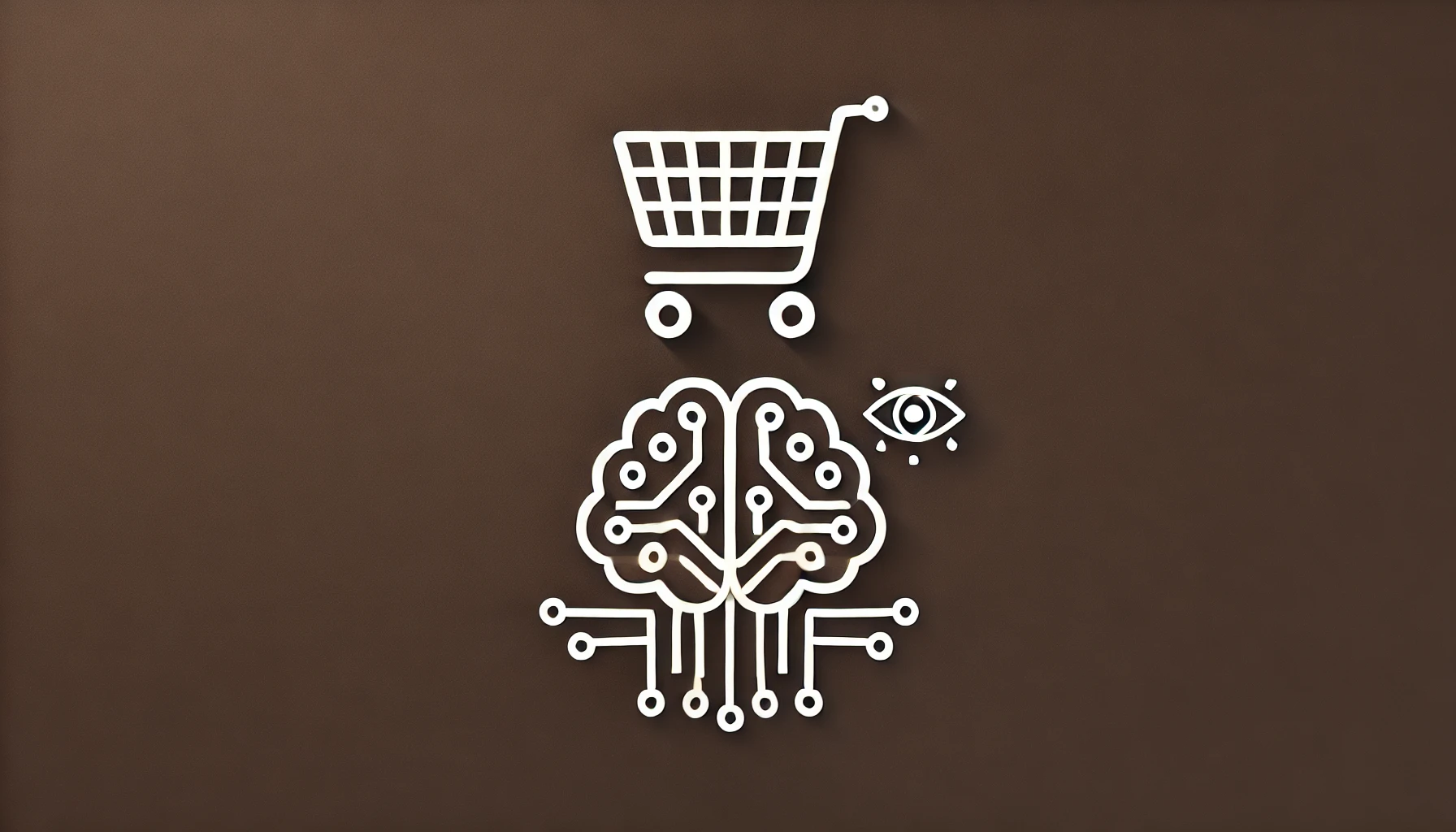As artificial intelligence (AI) continues to revolutionize advertising, businesses are experiencing both unprecedented opportunities and significant challenges. AI-powered ads, characterized by their precision targeting, dynamic personalization, and real-time optimization, are reshaping how brands connect with consumers. While these advancements offer immense potential, they also come with a risk: losing an authentic brand voice in the race for efficiency. Here are strategies to ensure your brand remains genuine and relatable amidst the surge in AI-powered advertising.
1. Define Your Core Brand Identity
Before diving into AI-driven advertising tools, it’s crucial to solidify your brand’s core identity. AI systems rely on data inputs to generate content, so providing clear guidelines ensures your brand’s essence isn’t diluted. Taking the time to define your brand’s personality, tone, and values creates a strong foundation for all AI-generated content.
- Develop Brand Guidelines: Create comprehensive documentation detailing your brand’s tone, voice, values, and visual elements. Specify whether your tone is formal or conversational, professional or playful, and ensure your visual identity—including color schemes, logos, and design elements—is clearly outlined. These guidelines serve as the blueprint for maintaining consistency across all AI-generated outputs.
- Articulate Your Mission and Vision: Your mission and vision define the core purpose of your brand and where you aspire to go. AI tools should amplify these ideals, not overshadow them. For example, if sustainability is central to your mission, ensure your campaigns emphasize this value consistently. This clarity ensures your messaging aligns with your overarching goals and resonates with your target audience.
- Set Boundaries for AI Outputs: Clearly define the types of language, imagery, and messaging that align with your brand’s personality. For instance, specify whether humor is appropriate, outline sensitive topics to avoid, and determine the level of formality required. Providing these boundaries ensures AI-generated content reflects your brand’s unique character and avoids missteps that could harm your reputation.
By solidifying your core brand identity, you create a roadmap for AI tools to follow, ensuring that efficiency and innovation go hand-in-hand with authenticity.
2. Humanize Your AI-Generated Content
While AI is remarkable for its ability to quickly generate large volumes of content based on data, it can sometimes miss the nuances of human emotion, creativity, and culture. Without a thoughtful human touch, AI-generated content may come across as robotic, impersonal, or disconnected from your target audience. To bridge this gap and create more authentic, relatable content, it’s essential to combine AI’s efficiency with human insight and creativity.
Review and Edit AI Outputs: AI can produce content that is technically accurate and efficient, but it often lacks the ability to truly capture your brand’s unique voice or emotional tone. A human editor should always review AI-generated content to ensure that it aligns with your brand values, tone, and messaging. This review process can refine the language, enhance emotional resonance, and add cultural relevance, ensuring that your content doesn’t just inform but also engages your audience on a deeper level.
Incorporate Storytelling: AI can analyze data to identify patterns in audience preferences, but storytelling requires empathy, imagination, and an understanding of human experience. A human touch is necessary to craft narratives that resonate emotionally with your audience. By blending AI’s data-driven insights with human creativity, you can create stories that foster genuine connections, inspire action, and build trust. Whether you’re sharing a customer success story or presenting your brand’s mission, ensure the narrative feels real and relatable.
Highlight Real Voices: One of the most powerful ways to humanize your content is by showcasing the voices of real people. This could include customer testimonials, user-generated content, or behind-the-scenes stories from your team members. When you include authentic experiences and perspectives, it adds credibility and relatability to your message. These voices ground your content in reality and make your brand feel more accessible, trustworthy, and human. By integrating real stories and experiences, you not only humanize your campaigns but also foster a stronger emotional connection with your audience.
3. Prioritize Data Ethics and Transparency
As consumers become more conscious of how their data is collected and used, brands must adopt responsible data practices that prioritize transparency and ethical considerations. Trust is a cornerstone of any successful relationship with your audience, and when it comes to AI, consumers want to know how their information is being utilized. By adhering to strong ethical guidelines and clearly communicating your data usage policies, you can foster trust and create long-term loyalty.
Be Transparent About AI Usage: It’s essential to openly communicate with your audience about the role AI plays in your campaigns. Whether you’re using AI for personalized ads, chatbots, or content generation, informing consumers about AI’s involvement allows them to make informed decisions about their engagement. Transparency about AI usage not only builds trust but also demonstrates that your brand values honesty and openness. For example, if a customer is interacting with a chatbot or receiving personalized recommendations, make it clear that these experiences are powered by AI. This transparency helps to humanize AI technologies and ensures consumers aren’t left wondering how decisions are made behind the scenes.
Focus on Privacy: Consumer privacy is a critical concern in the digital age. It’s essential for brands to ensure their data collection and usage practices comply with relevant privacy laws and regulations such as the General Data Protection Regulation (GDPR) or the California Consumer Privacy Act (CCPA). By adhering to these regulations, you demonstrate a commitment to safeguarding your customers’ personal information. Go beyond compliance by communicating your dedication to protecting privacy in all of your marketing materials. Provide clear explanations of how consumer data is collected, used, and stored, and give users control over their information. This helps establish a relationship built on trust and security.
Avoid Over-Personalization: While AI enables hyper-targeted advertising, excessive personalization can sometimes cross the line into invasiveness, making consumers feel uncomfortable or stalked. While personalized ads can be effective, it’s important to strike a balance and respect users’ boundaries. Over-targeting based on a user’s data, especially without their explicit consent, can feel intrusive. Ensure that your personalization strategies are thoughtful and focused on providing value to your audience, rather than making them feel like their every move is being tracked. By giving consumers control over how much data they share and how they are targeted, you can maintain a positive relationship and avoid alienating potential customers.
4. Adapt to Changing Consumer Expectations
Consumer behavior is constantly evolving, and as the digital landscape shifts, so too must your marketing strategies. AI can help you stay ahead of these changes, but its effectiveness relies heavily on the quality of the data and insights it uses. To remain relevant, brands must stay in tune with shifts in consumer expectations and tailor their messaging accordingly. This not only ensures that campaigns remain impactful, but also that they resonate with audiences on a deeper level, fostering genuine connections and long-term loyalty.
Leverage Social Listening: AI tools are powerful in helping brands monitor and analyze social media conversations, enabling you to stay updated on how your audience perceives your brand and the broader industry landscape. Social listening allows you to track emerging trends, consumer sentiment, and feedback in real time. By monitoring conversations across platforms like Twitter, Instagram, and forums, you can gain valuable insights into what your customers are saying, how they feel, and what issues they care about. Armed with this information, you can adjust your campaigns to respond quickly to trends, address concerns, and capitalize on new opportunities before competitors do. This proactive approach demonstrates your brand’s agility and attentiveness, keeping you relevant in a fast-paced digital environment.
Focus on Value-Driven Campaigns: Today’s consumers are not just looking for products or services; they are increasingly seeking brands that align with their values. Whether it’s sustainability, social justice, or ethical business practices, people want to connect with companies that share their beliefs and principles. AI can help you identify key priorities within your target audience by analyzing demographic data, browsing behaviors, and social media interactions. Use this insight to craft value-driven campaigns that speak to your audience’s deeper concerns. For example, if your customers are passionate about environmental sustainability, highlight your brand’s eco-friendly practices in your advertising. This value-centered approach not only fosters stronger connections but also differentiates your brand in a competitive market, showing that you understand what truly matters to your audience.
Engage in Two-Way Conversations: AI is often used for automating customer interactions, but it’s important to ensure these exchanges feel personalized and meaningful rather than transactional. Consumers increasingly expect brands to engage with them in a way that feels human and genuine. AI can be a powerful tool for facilitating dynamic two-way communication, such as through chatbots or social media interactions, but it should be used in a way that enhances, rather than replaces, human connection. Personalize responses, acknowledge feedback, and engage with empathy to create a conversational experience that fosters trust and loyalty. Make sure your AI tools are equipped to recognize the nuances of each interaction, offering solutions or responses that feel tailored to the individual. When customers feel heard and valued, they are more likely to remain loyal to your brand and advocate for it within their networks.
5. Maintain Consistency Across Channels
In the age of omnichannel marketing, AI provides the ability to reach your audience across a multitude of platforms, from social media and websites to email campaigns and display ads. However, one of the biggest challenges is maintaining consistency in tone, messaging, and visuals. Inconsistent communication across channels can confuse your audience, weaken brand recognition, and diminish trust. To uphold authenticity and ensure a seamless customer experience, it’s essential to maintain a unified brand presence no matter where your audience interacts with you.
Centralize Brand Management: One of the most effective ways to maintain consistency is by centralizing brand management through AI-powered tools. These platforms can help you manage campaigns across multiple channels and ensure that every touchpoint aligns with your brand’s identity. By using integrated campaign management systems, you can streamline content creation, approval processes, and distribution, ensuring that all your messaging, visuals, and calls-to-action are consistent. Centralized tools also allow you to monitor brand performance in real-time and make adjustments across all platforms from a single dashboard. This unified approach minimizes the risk of inconsistencies and allows you to maintain a clear and cohesive brand presence, whether your audience engages with you on Instagram, email, or your website.
Audit Campaigns Regularly: AI can automate many aspects of campaign management, but it’s still crucial to regularly audit your campaigns to ensure they stay aligned with your overarching brand strategy. Periodic reviews allow you to assess whether your AI-driven content remains consistent in tone, language, and imagery across different platforms. Regular audits help identify any inconsistencies that may have slipped through the cracks, such as mismatched visuals or mixed messaging. This process also provides an opportunity to evaluate whether your campaigns are effectively communicating your brand’s values, mission, and key selling points. By consistently reviewing your ads and adjusting as needed, you can ensure that your brand remains authentic and relevant over time.
Tailor Content for Each Platform: While consistency in your core messaging is critical, it’s also important to adapt your content to the unique characteristics of each platform. AI can help identify platform-specific nuances, allowing you to tweak your messaging to better resonate with the audience on that platform. For instance, a Facebook post might focus on a community-centered approach, while a LinkedIn post could highlight professional achievements or thought leadership. Similarly, Instagram content might prioritize visual storytelling, while an email campaign could focus more on detailed product benefits or personalized offers. By tailoring your content to each platform’s style and audience preferences, you can engage users more effectively while maintaining an overall consistent brand voice. AI can help you analyze which types of content perform best on each platform, guiding you in crafting messaging that’s both platform-appropriate and cohesive with your broader brand strategy.
6. Test, Learn, and Iterate
AI is a powerful tool for improving marketing strategies, but its true potential is unlocked when brands embrace a continuous cycle of testing, learning, and iterating. By constantly analyzing data and refining your campaigns, you can optimize your messaging, targeting, and creative assets, ensuring they stay relevant and engaging to your audience. This iterative process allows your brand to remain agile in a rapidly changing digital landscape while keeping your core brand voice and values intact.
A/B Test Campaigns: One of the most effective ways to fine-tune your campaigns is through A/B testing, where you create variations of ad copy, visuals, or calls-to-action and test them against each other. AI tools can automate and optimize this process by quickly generating multiple versions of an ad and analyzing their performance in real-time. For instance, you can test different headlines to see which one garners more attention, or experiment with various visual elements to determine which one resonates more with your audience. By analyzing the performance of these variations, you gain valuable insights into what types of messaging, visuals, or designs resonate best with different segments of your audience. A/B testing empowers you to refine your approach and drive better results while ensuring your brand voice remains consistent across iterations.
Monitor Performance Metrics: AI excels in gathering and analyzing vast amounts of data, making it easier than ever to track key performance metrics such as engagement rates, click-through rates (CTR), conversion rates, and customer feedback. By continuously monitoring these metrics, you can identify which elements of your campaigns are performing well and which ones may need improvement. For example, if an ad has a low conversion rate, you can dive into the data to identify whether the issue lies in the messaging, the design, or the targeting. AI tools can also track sentiment and identify patterns in customer behavior, giving you a deeper understanding of what drives conversions and engagement. Regularly assessing these performance metrics allows you to adapt quickly and make informed decisions to enhance future campaigns.
Incorporate Feedback Loops: To truly optimize your campaigns, it’s essential to integrate both AI-driven insights and direct customer feedback into your process. AI analytics provide a wealth of data on customer behavior, engagement, and preferences, but it’s also important to pay attention to what your customers are saying directly. Customer reviews, social media comments, and surveys can offer qualitative insights that may not be immediately evident from the numbers alone. Incorporating feedback loops into your campaign optimization process means taking the time to listen to both data and customers. You can use this information to fine-tune future campaigns, adjusting your approach based on what your audience values most. For example, if you notice customer feedback highlighting a desire for more educational content, you can tweak your ad copy to provide greater value or incorporate customer testimonials to boost authenticity. By continually refining your campaigns based on both data and customer insights, you ensure your marketing efforts stay fresh, relevant, and aligned with your audience’s evolving needs.
7. Invest in the Right AI Tools
AI offers a wide range of tools and platforms that can significantly enhance your marketing efforts, but not all of them are built the same. The key to maximizing the value of AI in your campaigns lies in selecting the right tools that not only meet your brand’s specific needs but also align with your core values. With the growing number of AI solutions available, making the right choice is essential to ensuring both effectiveness and consistency in your marketing efforts.
Look for Customization Options: One of the most important features to consider when choosing AI tools is the level of customization they offer. Every brand has its own unique voice, style, and messaging guidelines. Select AI tools that allow you to input these guidelines and tailor the generated outputs to suit your brand’s identity. Customization options can include adjusting tone, style, and visual elements, ensuring that AI-generated content or campaigns feel authentic and cohesive with your overall branding. Whether you’re automating ad creation, content generation, or customer interactions, having the ability to modify AI outputs ensures they stay aligned with your brand’s values and ensures a more personalized touch.
Prioritize User-Friendly Interfaces: While AI tools can be powerful, their effectiveness is diminished if your team struggles to navigate or manage them. The right AI platforms should be easy to use and intuitive, allowing your marketing team to implement and oversee campaigns without extensive training or technical expertise. Look for tools with clean, simple interfaces that enable quick adjustments, campaign tracking, and seamless integrations with other systems. A user-friendly interface helps ensure that your team can focus on strategic decisions and creative refinement rather than wrestling with complicated technology. This also enhances the efficiency of your AI-powered campaigns, allowing for quicker iterations, faster deployment, and better results.
Seek Tools with Robust Analytics: For AI tools to truly benefit your marketing efforts, they must provide detailed insights into campaign performance and audience behavior. Robust analytics capabilities are crucial for understanding what works and what doesn’t in your campaigns. Platforms that offer comprehensive reporting on metrics such as engagement rates, customer sentiment, conversion rates, and audience demographics allow you to monitor how your AI-driven content is performing across channels. With these insights, you can make data-informed decisions that fine-tune your campaigns and ensure they resonate with your target audience. Look for AI tools that provide actionable data in real-time, helping you stay agile and adjust your campaigns as necessary. These tools not only give you a deeper understanding of what drives results but also help maintain your brand’s relevance and authenticity by ensuring that your messaging is consistently aligned with audience expectations and preferences.
Conclusion
The surge in AI-powered advertising presents an exciting frontier for brands looking to scale their reach and efficiency. However, success in this new era requires more than just technological adoption. By defining your core identity, humanizing AI outputs, prioritizing ethical practices, and staying adaptable, your brand can thrive while maintaining its authentic voice. With the right strategies, AI can become a powerful ally in creating meaningful, impactful connections with your audience.





